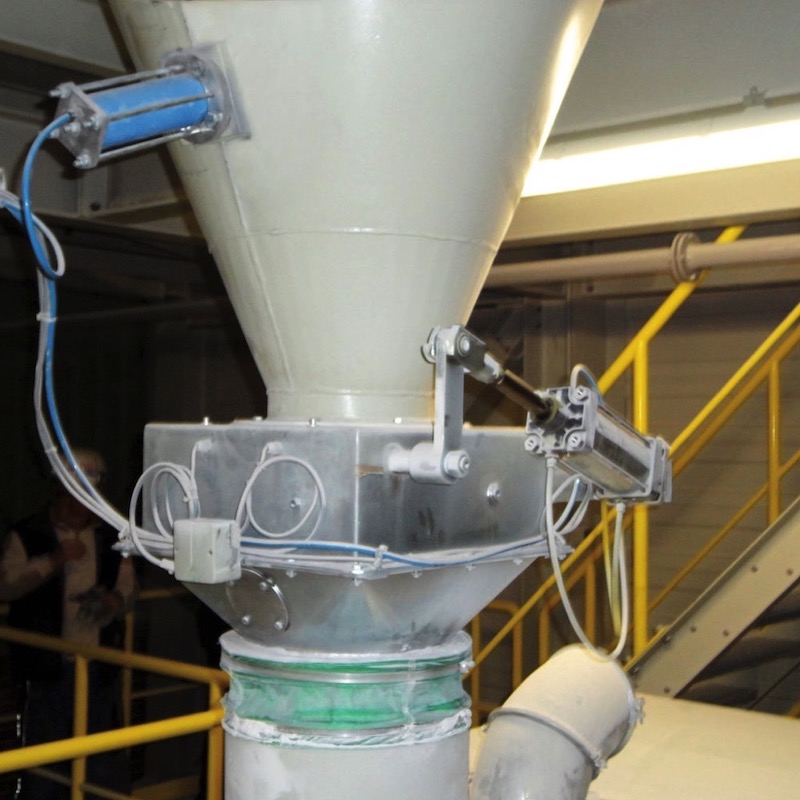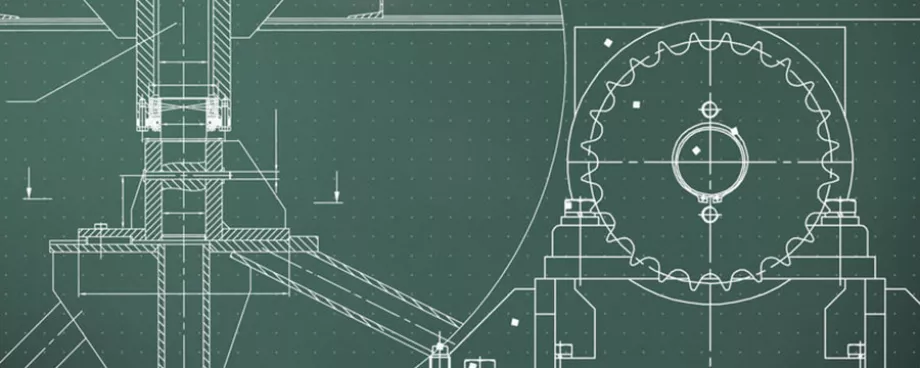
Where the bulk material flow is disrupted or irregular, putting the silo outlet (hopper) into vibration often is the only applicable solution. This has to be done carefully in order to avoid damage to the silo hopper and can be achieved by using pneumatic knockers, e.g. from Singold Gerätetechnik.The pneumatic knocker is used for bulk goods with material flow problems such as bridge, siphon and residue formations, when high speed shakers and vibrators with soft sine-shaped oscillations are no longer effective. The effect of the knocker is comparable to that of the famous “silo hammer”, but without distorted silo spouts additionally impeding the material flow.
Design and Operation Principles
The pneumatic knocker achieves a high grade of impact energy by the spontaneous release of the accumulated compressed air pressure. Its piston, designed as a permanent magnet, adheres in the end-position to the anchor plate until the compressed air fed through the lid overcomes the magnetic force. The impact piston loosens from the anchor plate, is very highly accelerated by the accumulated compressed air and hits onto the striker with a speed of 6 to 7 m/s, which transmits the impact to the silo wall. After de-aerating the cylinder, the piston will be pressed back into its starting position by means of a spring.The pneumatic knocker produces an ideal elastic shock, referred to as impact energy
| E = m · v²/2 |
and impulse
| J = m · v |
There is no impact force or out-of-balance such as vibrators generate. The effectiveness of the knocker may be judged according to the following rule: “If the product can be knocked off or be brought to flow by a hand hammer, the pneumatic knocker would also be effective.”Material flow problems can be solved by the operating personnel either by actuating a switch or a valve or can be totally prevented by an automatic control.Selection of the size and number of knockers is based on silo diameter and silo/hopper wall thickness. In case of rectangular containers, the knockers are installed at the longer sides. For product conveying out of a silo, cycle times of 5 to 20 s are recommended. Too frequent knocking should in any case be avoided, to prevent compaction of the product.Continuous product flows such as in dust filters and spray towers, should be knocked in cycle times up to 30 seconds. If the layer of product becomes too thick, an avalanche-like break-off could block the outlet or overload the following machines. If there are several knockers mounted at the periphery of a container, they are to be actuated one after the other, in order to have a more constant product flow and compressed air consumption. When emptying container scales, one should knock 2 to 4 times in a cycle time of 1 to 4 seconds.To allow using of the pneumatic knocker in various different applications, Singold offer their knockers not only in different sizes but also with different materials and for temperatures up to 140 °C.
Sound Insulation
The Pneumatic Knocker has the greatest effect, when the impact is transmitted without damping to the silo wall. It is, therefore senseless to damp the impact in order to reduce the noise, for this would also reduce the effectiveness of the knocker. That is why the noise arising can only be reduced by sound insulation. Singold supply the necessary sound insulation hoods (KSH) for the knockers, self-adhesive sound insulation plates (KSP) for the container wall, and sound absorbers for the deaeration borings of the solenoid valves.The Pneumatic Knocker may be used in the ex-range, if the solenoid valve and the control system are explosion-proof and the knocker is scavenged by external air through the air-scavenging outlets.The pneumatic impulse knocker, a special design of the pneumatic knocker, is suitable for rotating drums and moving parts to be knocked off, since the piston rod springs forward and backward at a high speed without remaining in the end position.
■







